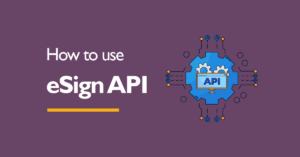With the internet at our fingertips, finding answers and the content we need has never been more accessible.
But with thousands of search results competing for attention, how do you ensure your technical content stands out?
The answer? Learn how to optimize technical content for search engines. This is a crucial step to increase your visibility and improve your ranking on SERPs.
However, I’ve found that effective technical SEO doesn’t happen by chance; it requires a well-thought-out strategy and consistent effort to see meaningful results.
In this post, I’ll guide you through key strategies to help you optimize technical content and rank well on SERPs.
Research relevant keywords
Effective keyword research is the foundation of any successful SEO strategy.
It starts by identifying the words and phrases your target audience uses when searching for technical information.
Technical tools like Google Keyword Planner, Ahrefs, or SEMrush can help you gather data on search volumes and competition levels for potential keywords.
When choosing your keywords, focus on a mix of short and long-tail keywords. While short-tail keywords may drive traffic, long-tail keywords can help you capture niche audiences with specific needs, which can lead to higher conversion rates.
For instance, if you’re writing about optimizing a cloud infrastructure, “cloud optimization” would be a short-tail keyword. In contrast, “how to optimize cloud infrastructure for startups” would be a long-tail keyword.
Ultimately, prioritize keywords with decent search volume that aren’t dominated by large competitors, especially in heavily saturated technical fields.
Keep user intent top-of-mind
User intent (or search intent) refers to the purpose behind a user’s search query. In simple terms, the “why” behind the “what.”
Often, users search for specific types of information, solutions, or resources to help guide their actions.
For example, searching for “how to set up AWS EC2” has a different intent from searching for “AWS EC2 pricing plans,” which is also different from “what is AWS EC2.” Though they all revolve around the same topic, each searcher has a unique intent.
How does this relate to search engines?
Google prioritizes providing the best user experience possible by satisfying users’ search intent. This means the content you create must align with what users genuinely seek.
When your content meets your audience’s needs and expectations, search engines recognize its relevance and reward it with higher rankings on the SERPs.
Use keywords in your main signal areas
After conducting thorough keyword research, strategically incorporate those keywords into your technical content.
Focus on critical areas such as your title, headings (mainly H1 and H2 tags), meta description, image alt tags, and the body of your content.
These are the primary signal areas that help search engines understand the focus of your content and assess its relevance to user queries.
However, one common pitfall to avoid is keyword stuffing—overusing keywords to the point where they disrupt the natural flow of your writing.
Google’s algorithms are sophisticated enough to detect such tactics, and if you engage in keyword stuffing, you risk penalties such as lower rankings or, in extreme cases, even outright bans.
Instead, aim to use your keywords organically, ensuring they flow seamlessly within the content without feeling forced.
The goal is to enhance both your search visibility and the readability of your content.
Leverage internal and external linking
Don’t underestimate the importance of links—they are a fundamental part of SEO and will continue to be so.
Both internal and external links enhance user experience while helping search engines understand the structure and authority of your content.
Internal links act as bridges between different pages on your site, helping search bots crawl and index your content more effectively. They also distribute link equity (SEO authority), boosting the ranking potential of various pages across your site.
On the other hand, external links point to authoritative sources outside your site that support your claims. By referencing trusted sites, you help search engines assess the credibility of your content, contributing to the E-E-A-T standard (more on this in the next point).
Write E-E-A-T content
E-E-A-T, which stands for experience, expertise, authoritativeness, and trustworthiness, is a standard by which search engines, notably Google, use to evaluate the quality and reliability of your content.
To optimize your technical content effectively, show the following:
- Experience: Your technical content should reflect real-world knowledge of the subject matter. This could mean sharing personal insights, case studies, or industry examples that showcase hands-on experience.
- Expertise: You need to establish yourself as an expert in your field and know how to present complex topics clearly and informatively.
- Authority: To show authority, collaborate with industry experts, contribute to reputable publications, and build backlinks to your content from other authoritative sites.
- Trustworthiness: Finally, your content must be trustworthy, reliable, and accurate. Always fact-check your claims and use data from reputable sources. Avoid sensationalist or misleading information, which can damage your credibility and negatively impact your search rankings.
Optimize your visuals for SEO
Adding relevant visuals to your content is excellent for SEO ranking factors and making blog posts more accessible and engaging.
They help readers understand complex information that might be hard to grasp through text alone.
To optimize your visuals, follow these practices:
- Use descriptive alt text with relevant keywords to help search bots understand your visuals and improve their relevance for image search.
- Compress your images to improve page load speed. Slow-loading visuals can negatively impact your Core Web Vitals, especially on mobile devices.
- Choose the proper file format—JPEG for photos, PNG for detailed graphics, and WebP for superior compression without losing quality.
- Finally, ensure your images are responsive, automatically adjusting to fit different screen sizes.
Properly optimizing your visuals will enhance user experience and search engine performance, providing more opportunities for higher rankings.
Create a search-friendly URL
Your URL is one of the first things users and search engines notice when they land on your page. That’s why it’s essential to keep it clean, relevant, and search-friendly.
To achieve this, focus on the essential words that describe the content. A short, to-the-point URL works best.
Including your primary keywords in the URL is also a smart move for better ranking, but don’t overload it with unnecessary terms or symbols, which can confuse both users and search engines.
For example:
Do: “http://www.yourdomain.com/how-to-optimize-technical-content-for-search-engines/”
Don’t: “http://www.yourdomain.com/page?id=123xyz”
In this example, the URL clearly outlines the blog’s coverage, making it easy for users to decide if it’s worth their time.
Since it contains the primary keyword (‘technical content’), search engines can better understand the topic, improving your site’s visibility in search results.
Consider your meta descriptions and title tags
Meta descriptions and title tags are the first impressions of your content that appear in search results.
While they don’t directly influence rankings, they significantly impact your click-through rates (CTR), a ranking factor.
So, the better your meta tags attract clicks, the more likely search engines will view your content as relevant and valuable, leading to higher rankings.
To make the most of your meta title and descriptions, here are a few best practices:
- Include your primary keyword in the meta title and description, preferably near the beginning.
- To ensure they display correctly in SERPs, keep your meta title between 50 and 60 characters and your meta description between 150 and 160 characters.
- Highlight what makes your content unique or valuable. This helps your listing stand out from competitors.
- Be direct and compelling with a call to action. Using phrases like “discover” or “learn” can entice more users to click.
- Align your meta tags with the user’s intent to increase CTR. Users are more likely to click through if they see that your content meets their needs.
Prioritize quality over quantity
In SEO, “content is king” has been repeated so often that it’s easy to think volume equals success. It is a misconception.
Search engines, like Google, are designed to prioritize content that delivers value—content that thoroughly answers a user’s query and covers the topic comprehensively.
Simply creating a large volume of content without focusing on depth or relevance might boost your site’s page count, but it will not improve your rankings or website reputation.
Instead, focus on delivering high-quality content. Address search intent, support your claims with credible sources, and address your audience’s problems.
This approach will strengthen your SEO efforts and build trust and credibility with your audience, both of which lead to long-term success.
Optimize your content for featured snippets
Featured snippets are concise answer boxes at the top of some search results. They often give users immediate answers without needing to click through to a website.
Snippets are incredibly valuable for visibility and, if optimized correctly, can drive significant organic traffic to your site.
To increase your chances of being featured, structure your content to answer common questions clearly and concisely.
Use headings, bullet points, and numbered lists to break up the content—Google favors well-organized, easy-to-read formats, especially for “how-to” queries, step-by-step guides, and lists.
Finally, ensure your content reflects the most accurate, up-to-date information. Snippets often highlight the “best” answers, so your content should confidently provide valuable, relevant solutions.
Consistently monitor and review performance
SEO isn’t a one-time thing. Algorithms change, user behaviors shift, and even your competitors constantly refine their strategies.
So, you’ll need to track your content’s performance to stay ahead continuously.
With tools like Google Analytics, Google Search Console, and Ahrefs, you can get insights into essential metrics such as organic traffic, user engagement, CTR, bounce rates, and keyword rankings.
These metrics help you identify which pieces of content are performing well and which need improvement.
Regularly monitoring and refining your content ensures it stays competitive, engaging, and aligned with current SEO best practices.
Wrapping up
Optimizing technical content for search engines requires extensive work. By focusing on both the technical aspects and the user experience, you can ensure your content stands out to both search engines and readers, ultimately driving more traffic to your site.
At RoninPoint, our professional writers specialize in distilling complex concepts into simple, digestible content that aligns with best SEO practices.
If you want to build and sustain an SEO strategy that yields long-term results, contact us now to get started.
Who wrote this?
Joanna is a versatile content writer with a knack for creating helpful content that resonates with others. When she’s not typing away, she finds solace in quiet moments, music, and cinematography videos. She believes she has an untapped well of creativity inside her and she’s willing to dig deep to fetch it out.
- Joanna Alihttps://roninpoint.com/author/joanna/
- Joanna Alihttps://roninpoint.com/author/joanna/
- Joanna Alihttps://roninpoint.com/author/joanna/
- Joanna Alihttps://roninpoint.com/author/joanna/April 20, 2025









